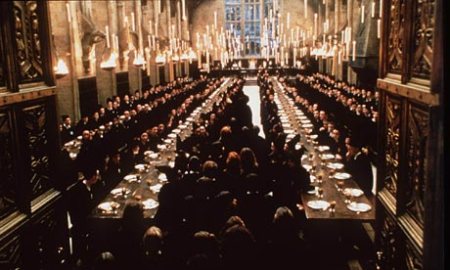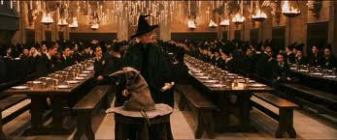

Both tell the story of two men planted as moles in the opposite’s group, and their struggle with deciding what kind of person they really are. Some say it is almost like watching the same movie twice, but there are significant differences in both films.
The Story
Internal Affairs is about two young men, Chan and Lau, who are both undercover. Chan is a former cadet in the police academy who was asked to infiltrate the Triad, a notorious Hong Kong gang, while Lau is a member of the Triad posing as a cop.
The film begins with Triad boss Hon Sam sending a bunch of young gangsters, including Lau, to train at the police academy and become cops, so that they can have access to inside information. The movie skips ahead to nearly 10 years later, with Chan confiding in the head of the police department, Wong, that he has been a part of the Triad for so long that he is starting to feel like a real criminal, and in the same way, Lau seems to enjoy being a part of the police force. Both organizations meet and discuss the fact that there is a mole in each group, and ironically, it is Chan and Lau who are given the task of discovering who the moles are.
Lau has a girlfriend who he moves in with and plans on marrying, while Chan begins to fall for his therapist.
Another gang member is shot and right before dying, tells Chan that he is also a mole and knows about him.
When Chan and Wong meet one day, they are nearly discovered, but Wong sacrifices his life to keep Chan’s identity a secret. Lau decides to kill Sam, thinking he can erase his connection to crime and remain a cop, but then Chan finds out he is the mole.
In the end, Chan holds Lau hostage, but is fatally shot in the head by Inspector B, a fellow cop. Inspector B then reveals that Sam had more than one mole on the force, to which Lau then shoots him, so that his past can stay a secret and he can keep being a good guy.
***
The Departed is also about two young men, Colin Sullivan (Lau’s character) and William Costigan (Chan’s character), who go undercover.
Set in South Boston, the movie opens with what looks like archival footage, while Jack Nicholson’s character, Frank Costello, narrates in voice over. He walks into a shop and meets Sullivan, who at the time looks no older than 12, and invites him to join the Irish Mob. The story then shifts to years later, with Sullivan now training as a cadet at the police academy so that he can become a mole for Costello. We then meet Costigan, another cadet, who is asked by the police chief, Queenan, and his second-in-command, Dignam, to use his family ties to organized crime to infiltrate the Irish Mob. There is a montage of Costigan doing time in prison to make himself seem more legitimate to Costello, and Sullivan doing his duty as a cop and being good at what he does. Costigan is accepted into the Irish Mob and we see that he actually does make a good criminal.
Sullivan starts to see a therapist and soon begins a relationship with her, but Costigan is also seeing her, both as his therapist and romantic interest.
Costigan meets with Queenan to talk, but the police and mob are tipped off and arrive. Queenan sacrifices himself to keep Costigan’s identity a secret and is thrown off the roof, landing right in front of Costigan.
Another member of the mob dies in front of Costigan, right after revealing to Costigan that he knows he is the mole. When his body is found by the cops, the mob finds out on the news that he was working for the police as a mole too.
In the remake, a big difference is that Costello is actually an FBI informant, undercover himself in a way, which is one of the reasons why Sullivan kills him.
In the end, Costigan holds Sullivan hostage after discovering that he is the other mole, but is shot in the head by one of Sullivan’s fellow officers when exiting an elevator. Another cop shows up and shoots the other officer, killing him, before revealing to Sullivan that he was also a mole for Costello. Sullivan then kills him too, so that his role in everything can remain a secret and he can continue being a cop.
However, this movie ends differently from the original, with Sullivan opening the door to his apartment one day only to be shot by Dignam standing there wearing hospital footies and gloves.

Mise-en-Scene
Obviously, the settings are completely different, which impacts the mise-en-scene. The lighting in Internal Affairs is mostly dark; I think it’s low-key. The Departed, being a Hollywood movie, is a lot brighter despite being a serious movie, but not by much. Their costumes are quite different because in the original, the police wear mostly suits and dressy clothes, and so do the members of the Triad, whereas in the remake, the police wear their uniforms and the Irish Mob members wear mostly street clothes, because it is Boston after all. The main difference in their mise-en-scene is that because Internal Affairs was filmed in Hong Kong, they were able to include a lot of cultural scenery in the film, which is especially notable at the very beginning.
Editing
A big difference between the two movies is their length. While the original has a running time of 101 minutes, a little over an hour and a half, the Hollywood remake is approximately 150 minutes, almost a full hour longer than the original needed to tell the same story. The reason for this is that Internal Affairs jumps 10 years into the future to where Chan is already a member of the Triad, but The Departed shows how Costigan managed to work his way into Costello’s mob.
Other differences are that in the original, there are a significant amount of black-and-white flashbacks, and it is a lot more fast paced than its remake. In the former, the film opens to a montage of what appears to be Hong Kong statues and sculptures and then the title is shown, but in the latter, director Martin Scorsese decides to only put the title sequence 17 minutes into the movie, after the characters and story have been fully introduced.
The most significant difference (in my opinion) is the soundtrack to the movie. Internal Affairs has a lot of instrumental music that I would assume is native to Hong Kong, which I was not a huge fan of if you compare it to the music in The Departed, which includes “Gimme Shelter” by The Rolling Stones and The Dropkick Murphys’ “I’m Shipping Up To Boston,” both of which are reoccurring throughout the film. Even if a lot of the scenes are almost the exact same as in Internal Affairs, just adding those songs made them about a million times more epic.

Shift in Target Audience
As for the original, I wasn’t sure if the actors were younger or just looked it, but I figured that might be something. That, and the fact that I felt like they were trying to make the movie funny sometimes even though it was a serious subject, makes me believe that they were trying to appeal to younger audiences.
Then, with The Departed, I think they were obviously trying to make the movie more “Hollywood” so people would want to go see it. They used the same man who wrote the original, William Monohan, which explains why both movies contain many of the same exact scenes, but they probably decided to give The Departed a different ending because it wasn’t “happy” enough. I mean, sure, the movie ends with basically everyone dead, but I guess it maybe bothered people that Lau/Sullivan got away with everything in the end and Scorsese thought people would be more satisfied with him dying too.
I also think that the love triangle between Costigan, Sullivan and their therapist (and the baby mama drama near the end), was added to make women want to see it. Let’s face it, girls and women tend to like movies more if there is love and sex involved, and that’s why they put that in there.
I think the target audience they were trying to attract was EVERYONE, based on the huge amount of bad-ass A-list Hollywood actors in the movie.
My Personal Opinion
The Departed wins.
I hate to say it, because remakes are almost never better than the original, but it was in my opinion.
They were both really funny, but I think The Departed beats out the original just because of Mark Wahlberg’s character.
I also enjoyed the relationships between Costigan/Sullivan and Costello, and Costigan/Sullivan and Queenan/Dignam better in this version.
Hon Sam didn’t seem all that crazy or threatening (we never even saw him kill anyone), which made him kind of a boring mob boss, but Jack Nicholson as Frank Costello was perfect because he was bat shit crazy, making him scary and hilarious at the same time.
And the main reason why I believe that The Departed was better than Internal Affairs: There’s nothing better than watching Leonardo DiCaprio beat the living crap out of Matt Damon.






/vlcsnap2010120723h31m55_large.png)



